|
|||||||||
|
 |
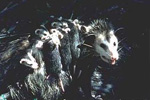 |
North America hosts a striking and varied panorama of wild creatures found nowhere else on earth. Some of them have ancient claims to being original citizens, while others are recent imports. All are fascinating and are found in every corner of the country. A rare film sequence captures several aspects of America’s only Marsupial — mating behavior, birth and development of the Opossum. |
 |
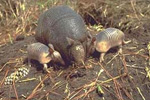 |
Like a well equipped soldier, the Armadillo of our southern states is always dressed for battle. Its lizard-like skin and bony-plated shell give it a perfect defense against predators. Named “little armored one” by Spanish Conquistadors, this surprisingly agile swimmer and powerful digger has proven itself a true pioneer in the fastest known migration of any animal. |
 |
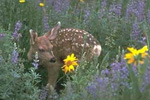 |
If you can’t go to see all the wildlife you’d like, then maybe you can attract more of it to your own backyard or window sill. It’s easier than you think. Creating habitat for wildlife also enhances the beauty and value of your entire neighborhood. This program outlines easy steps to provide food and shelter for a variety of Birds, Mammals and other fascinating creatures. |
 |
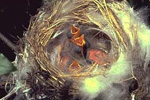 |
Some wild animals have not only survived our progress, but are actually thriving within numerous urban areas. Raccoons, Deer, Coyotes, Skunks, and a wide variety of Birds are adapting to a world shared increasingly with humans. Backyard wildlife is a never-ending joy for wildlife watchers. Also included in this program are tips for attracting creatures to your own backyard. |
 |
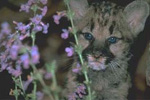 |
From Bluebells to Bluebirds to Blue Whales — Nature abounds in examples of this primary hue. And in this wildlife programming departure, we take a lyrical look at the color blue in both the Plant and Animal Kingdoms, explaining some of the reasons why it exists. Some explanations are simple — others quite complex. Beautiful and bold, this is a wild “Rhapsody in Blue”. |
 |
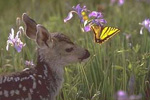 |
Few of Nature’s creatures delight us more than the short-lived Butterfly. During the warm spring and summer months, Butterflies multiply miraculously. Even so, some species live but a fortnight. We’ll follow the Monarch’s thousand-mile trek to its huge wintering colonies. We’ll also show you how easy it is to attract these fragile beauties to your very own backyard. |
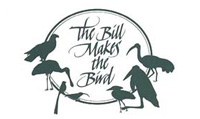 |
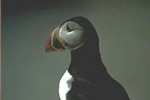 |
Whether a bird chisels, cracks, probes, snaps, or pecks around for a living, its bill plays a big part in what unique Ecological Niche it will fill. With sturdy conical bills, a Grosbeak crushes the hardest seeds. Using the notch on a hooked beak, a Falcon snaps the neck of prey. Limpkins slide their long curved bills into snail shells and, with spatula-shaped mandibles, Spoonbills seine southern waters. |
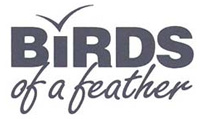 |
 |
Birds are distinguished from other animals by their feathers. Few of Nature’s creations surpass the feather’s function, beauty and design. These delicate, yet complex, structures insulate, waterproof, camouflage, and adorn. But the most notable function of feathers is flight. Join Marty Stouffer as we learn how feathers give Birds a powerful edge in the struggle to survive. |
 |
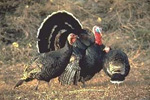 |
As spring unfolds, the sweet melodies of Birds provide a welcome break from the stillness of winter. The trills and eye-catching displays of courting males actually serve a dual purpose — to intimidate rivals as well as to attract prospective mates. The song and dance rituals are all orchestrated toward a single goal — to ensure the most fit pass on genes for future generations. |
 |
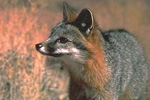 |
The silent grandeur of Monument Valley, the ragged chasms of the Grand Canyon, the magnificent sandstone arches of Utah... these spectacular landscapes exert a powerful influence on the wild creatures that live within their realms. Cooper’s Hawk, Rattlesnake, Mountain Lion and Gray Fox — living things are fewer and further between in these vast spaces, but they are all interconnected. |
 |
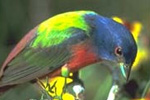 |
From rich reds to bright yellows, cool blues to velvet blacks, the many colors we perceive in Nature evolved because they have survival value for living creatures. Certain hues aid reproduction or serve as protective camouflage. Some signal danger. This pretty program reveals practical aspects of beauty, and shows how it enhances our enjoyment of Nature. |
 |
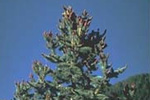 |
Our most enduring trees are the Evergreens — the oldest, tallest, and largest of all living things! Long ago, people thought they were magical and brought their luck indoors to begin the Christmas tree tradition. Haven for a myriad of Birds and Mammals, which seek shelter among their boughs, these are truly trees for all seasons, symbols of the American wilderness. |
 |
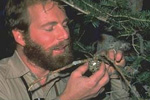 |
The fifteen species of Hummingbirds that nest north of Mexico are exquisitely beautiful in their multi-colored iridescence. All are unique to the New World. European explorers were astounded by these tiny, glittering birds that zipped up and down, backwards and sideways, with wings humming and blurred. Here they are seen as never before, and we savor every last little wingbeat. |
 |
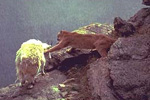 |
A decade of North America’s fascinating and varied creatures, spectacular locations, and imaginative filmmaking have combined to make WILD AMERICA one of the highest-rated programs on PBS and a favorite for millions of viewers. Marty Stouffer proudly hosts a retrospect of WILD AMERICA’S first ten years. He also presents a peek at the future of the Series. |
 |
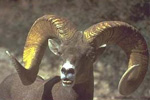 |
Horns are permanent, while antlers are shed annually. The forked horns of the Pronghorn Antelope may prove to be the missing link between these two types of beautiful bony crown. Since prehistoric times, man has displayed these trophies. We’ll share this ancient human fascination with horns and antlers as we explore their vital, and often unusual, roles in Nature. |
 |
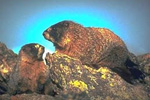 |
Amid the scenic springtime beauty of the wild Rockies, we meet a colony of Yellow-bellied Marmots waking from winter hibernation. As summer progresses, these social “Rock-chucks”, close kin to the Woodchuck, teach their fuzzy young about communal life. One major lesson is diving for safety when a sentry whistles that their primary predator, the Golden Eagle, hovers overhead. |
 |
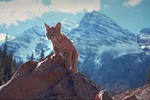 |
Alpine animals are truly the kings of survival. In order to survive in a severe and unpredictable habitat, all have adapted in special ways. A revealing time-lapse shows the development of Golden Eagle chicks. Also presented are the four Wild Sheep — the Dall, Stone, Mountain and Desert Bighorn — as they fight their everyday battle to endure and perform their ancient rituals of courtship. |
 |
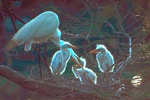 |
They can be cup-shaped, or long and hollow, like gourds. They can be coarsely made of sticks and mud, or exquisitely woven of spider web and down. They can be found anywhere, deftly hidden or dangerously exposed. Even the eggs that fill them are not always egg-shaped. Whatever the style of the nest, this program shows that Birds do not need a house to make a home. |
 |
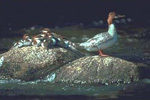 |
From fern-filled rain forests to towering, glaciered peaks, the lush beauty of our Pacific Northwest has many levels. Starting on a wave-beaten shore, Marty Stouffer leads us upward through the life zones of Washington’s Olympic National Park, where we meet the wealth of wildlife. Roosevelt Elk, Black-tailed Deer and Mountain Beaver enrich this unique wilderness sanctuary. |
 |
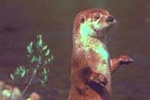 |
Graceful, powerful, and — above all — playful... is the endearing River Otter. This program is a portrait of these energetic creatures, set against the backdrop of our nation’s largest park in the Adirondack Mountains of upstate New York. From tumbling streams to placid lake shores, this freshwater clown finds fun wherever it travels. Every aspect of its existence is explored. |
 |
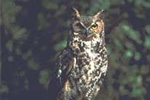 |
The Owl’s incredible sight and hearing are second to none in the animal world, and its ability to fly with utter soundlessness is nothing short of remarkable. Its life history is endlessly intriguing. The eighteen species of North American Owls are creatures of mystery. Owls are undisputed champions of the Birds of Prey. They reign — as they have for ages — lords of darkness. |
 |
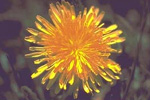 |
Seeds that actually walk along the ground, mushrooms that glow in the dark, and vines that strangle their host to death... These are just some of the extreme tactics that plants have adapted to ensure survival. Time-lapse photography reveals the Plant Kingdom’s most ingenious and dramatic reproductive techniques, proving Plants to be as wild and indispensable as any wildlife. |
|
|
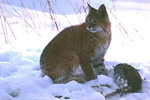 |
Elegant and graceful, the Lynx is one of Nature’s finest physical specimens. Its primary quarry is the elusive Snowshoe Hare. It is seen that the numbers of predator and prey — Lynx and Snowshoe Hare — are intricately linked in a ten-year cycle that rises and falls in unison. This fascinating, unexplained phenomenon is only one of many mysteries in the Great North Woods. |
 |
 |
One of the few creatures that can afford to turn its back on an enemy, the Porcupine has approximately 30,000 good reasons for doing so. Barbed quills on back and tail insure that it has few enemies in the first place, so this large Rodent confidently goes about its business at an extremely relaxed pace. As we see, however, it can be destructive and sometimes controversial. |
 |
 |
You may not be able to turn one into a prince, but Frogs are certainly royal in their ability to adapt to many types of habitat. Commonly seen, yet little known, these water-loving Amphibians are usually smooth-skinned, sleek and speedy. We examine the surprising life cycles of the Leopard and Bullfrog, the tiny Tree-frog nicknamed the “Spring Peeper” and other croaking creatures. |
 |
 |
Until 65 million years ago, giant Reptiles ruled the Earth. Dinosaurs have disappeared, but their multitude of descendants thrive in practically every kind of habitat North America offers. Masses of emerging Garter Snakes writhe in Manitoba’s Snake Pits. And from southern swamps resounds the primeval bellow of the Alligator, echoing an era millions of years before man. |
 |
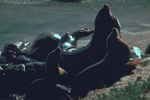 |
The Pacific Coast’s various species of Seals and Sea Lions spend most of their lives roaming the ocean, coming ashore only to give birth and to breed. To best utilize their time gathered on land, both events occur together. January to July is the season when enormous Elephant Seals clash in battle, graceful California Sea Lions frolic, and baby Harbor Seals learn to dare the waves. |
 |
 |
Nature’s artistry includes brightly colored feathers, fur, petals and scales designed to attract mates or ward off enemies. But what about her neutral hues? Marty Stouffer examines the function of non-color in Nature, and shows us that the lives of gray creatures, such as the Glacier Bear, Stone Sheep, Gyrfalcon, and even the Gray Wolf are certainly anything but drab. |
 |
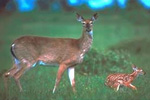 |
One of America’s loveliest National Parks is at its most spectacular when Dogwood and Rhododendron burst into bloom. We witness this special season of change and beauty, and learn Nature’s secrets of precise timing, as the forested Virginia hillsides unfold. From flowering forest floor to greening treetop, we see a complex interaction of a myriad of living things. |
 |
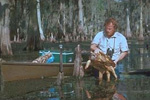 |
In the eerie backwater bayous of southern Louisiana’s Atchafalaya Basin, Marty Stouffer poles a traditional pirogue to track the South’s largest animal, a honey-loving legend. Clues lead to a Bobcat, Alligator, Snapping Turtle, and other animals which share this mysterious realm with an elusive phantom — the Black Bear. Though large, it is now rare in these hardwood bottomlands. |
 |
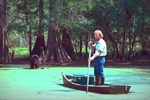 |
Continuing to search the wild heart of bayou country, Marty finds and follows more clues, meeting creatures both friendly and deadly, before locating the Bear’s feeding ground: a pool of Catfish, a surprisingly tricky meal. When an aggressive Alligator moves in during the night, the two legends compete and clash to reveal which will be king of the Catfish pool and the swamp. |
 |
 |
Since many wild animals are nocturnal — and all are wary of humans — they’re often difficult to glimpse. But every creature leaves behind signs of its passing. Curiosity, patience and a good field guide are the only equipment needed to learn to read this revealing record. Marty Stouffer offers valuable tips on tracking and getting close to Foxes, Moose, Bears, and Birds. |
 |
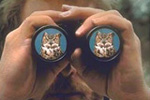 |
Where, when and how can the average viewer watch North America’s wild creatures in their natural surroundings? The answers are here in this fact-filled program. Also examined are the many reasons why we seek out wildlife. From majestic Elk herds in Yellowstone to songbirds at the feeder, watching wild creatures provides a great opportunity for learning. |
 |
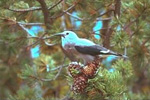 |
The Whitebark pine tree has wingless seeds that do not disperse in the wind. How does this stout member of the Evergreen family reproduce? The Clark’s Nutcracker, a Crow-sized bird that removes the seeds from the cones and buries them in the ground, allows the Whitebark pine to renew itself. It’s an essential food source for many creatures from Red Squirrel to Grizzly Bear. |
 |
 |
Texas is big! It’s also wild and incredibly varied. In this state, there are at least six dramatically different life zones — desert mountains, flat grasslands, hill and brush country, piney woods and swamplands. For viewers accustomed to seeing the Lone Star State as a land of livestock and oil wells, this look at little-known wild areas promises many surprises. |
 |
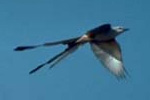 |
America’s Birds come in all shapes and sizes, and they range from homely to breathtaking. But they share one thing in common — the awesome power of flight. The airborne freedom which sets Birds apart from other creatures has been envied by man for centuries. All the diverse Bird types are seen — powerful predators, melodious songbirds, and graceful water birds. |
 |
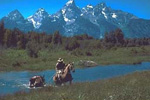 |
Wyoming has more wildlife — both in broad diversity of species and also in sheer numbers — than any other state south of the Canadian border. It is also blessed with more exploitable resources than any state except Alaska. Conflicts between the two are developing. Wyoming’s untamed beauty is seen to be all the more precious in light of the controversy it raises. |
 |
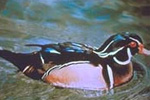 |
Two of the world’s most beautiful ducks are North American natives. The Wood Duck, or “Woody,” dabbles on plant life. The Hooded Merganser, or “Hoody”, dives for fish. Differences in lifestyles lead to amusing events when female Woodies and Hoodies lay eggs in each other’s nests. We watch as a mother Woody at Iroquois Wildlife Refuge tries to raise a mixed brood. |
 |
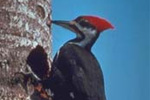 |
The ancients believed these Birds were gods that could bring forth rain by tapping their bills. Woodpeckers cannot perform miracles, but they do know how to use their heads. Special adaptations enable them to whack away at tree trunks with extraordinary force in their quest for food and shelter. This high-powered hammering also benefits humans by destroying Insect pests. |
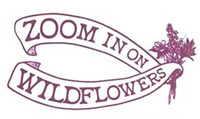 |
 |
Marty Stouffer rides the Great Divide from Mexican to Canadian border in search of beautiful and unusual wildflowers. Along the route, we learn how Native Americans used wildflowers for food and medicine. Cactus of Arizona, Yucca of New Mexico, Columbine of Colorado, Paintbrush of Wyoming, and Bear Grass of Montana all play a part in this adventure. |